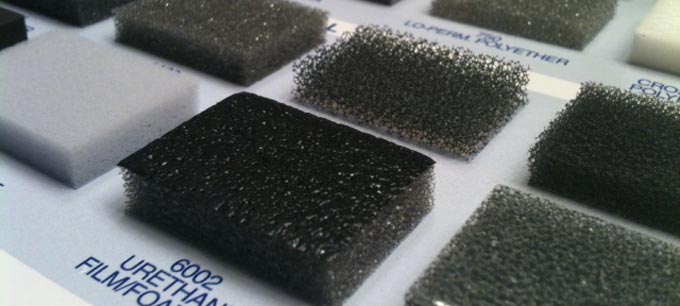
In open cell materials, such as our open cell foam, gas from within the material is released during formation, creating empty spaces. This often allows for a lower density compared to closed cell materials as well as the ability to return to its original state after compression.
Open cell materials are generally more flexible and can conform more easily to sealing applications than closed cell materials. Open cell materials do not resist liquid water or water vapor (such as humidity) and are more often less durable than closed cell materials.
Some open cell materials offer higher performance characters such as low compression set, resistance to chemical environments, and tolerance of extreme temperatures.
Design Criteria
Open cell flexible polyurethane foams meet many design criteria for filtration functions including collecting vaporized oils from industrial equipment, acting as an evaporative surface and removing dust and contaminating particles from air, gases and liquids.
- Filter Foam
- Polyester Urethane
- Polyether Urethane
Some special purpose open cell foams provide higher performance features such as low compression set, resistance to harsh chemical environments and tolerance of extreme temperatures.
Every call, question and quote request will be answered by an owner.




